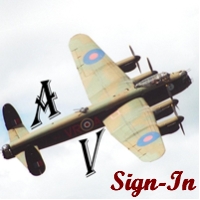|
|
Dates |
|
Event |
|
|
Constructed as an Il-10. |
|
|
Taken on Strength/Charge with the Korean Peoples Air Force with s/n 44. |
By September 1950 |
|
To 57th Aviation Assault Regiment, Seoul-Kimpo Airfield, South Korea.
Markings added: 44 |
15 September 1950 |
|
Discovered.
After being abandoned by the North Koreans, the airframe was captured by U.S. Marines at Seoul-Kimpo Airfield following the Inchon Landings. Also captured was Il-10 #55. |
September 1950 |
|

Photographer: CAPT. Lyle Bradley, USMCR via Fargo Air Museum
Notes: Photo taken at Seoul-Kimpo Airfield following its capture by the U.S. Marines. Photo was taken by US Marine Corps Reserve Corsair pilot Capt. Lyle Bradley. |
September 1950 |
|

Photographer: CAPT. Lyle Bradley, USMCR via Fargo Air Museum |
By January 1951 |
|
Sent to the United States for testing. |
24 January 1951 |
|
To Cornell University (Cornell Aeronautical Laboratory), Buffalo, NY. |
|
|
Repaired.
Using parts from Il-10 #55 (T2-3001), T2-3000 was repaired to airworthy condition for testing. |
8 May 1951 |
|
Transferred to Wright-Patterson AFB, OH. |
|
|
Taken on Strength/Charge with the United States Air Force with s/n T2-3000. |
5 July 1951 |
|
Damaged.
USSR IL-10 took off at 1115 local for a test flight flown by test pilot Captain Robert L. Stephens at Wright-Patterson AFB, Ohio. Soon after takeoff the tower informed him that his rear (gunner) canopy was open. Unable to close the rear canopy in flight the pilot chose to land so the canopy could be closed (20 minute flight). The pilot accomplished a normal landing and taxied to the parking ramp. The pilot made a right turn to pass a T-6 and the right landing gear folded up, causing major damage to the propeller, right wing, and right wheel fairing. Examination of the aircraft revealed that the gear were locked in the down position. When the aircraft was raised by crash equipment the right gear snapped into the locked position of its own accord. Twelve series of retraction tests failed to reveal any malfunction of the main landing gear system. The landing gear and flap handles are identical in color and construction and located side by side on the cockpit pedestal. It is believed that while attempting to raise the flaps during post landing check the pilot inadvertently moved the landing gear control handle to the up position sufficiently to release the right landing gear down lock and allow the right gear to collapse. (determination: foreign aircraft on which safety features were inadequate). |
1 August 1951 |
|
USSR IL-10 was being ground checked at Wright-Patterson AFB, Ohio with water being run through the coolant radiator while the engine was idled at 1600RPM in order to reduce coolant temp subsequent to a power check. The pilot, LtCol Richard L. Johnson signaled for the crew chief, civilian Jesse A. Francis, to dismount from the left wing. The crewman was caught by the prop blast, lost his balance, and was forced to jump from the wing injuring his left ankle, foot and leg (technically: rupture, traumatic, tendoachillis, 2.5 inches above the oscalcis, left).Pilot LtCol Johnson flew the IL-10 that day for 1.1 hours that day and was not aware that the crew chief had been injured.This report was listed as Major only because of the injury. There are no photos in the report for obvious reasons. |
17 August 1951 |
|
Transferred to Aberdeen Proving Ground, MD. |
|
|
Destroyed.
Subjected to vulnerability tests at the Terminal Ballistics Laboratory. These tests consisted of gunfire which would have rendered the aircraft unflyable. In other words, T2-3000 was shot up, probably with various AA and aircraft gun rounds to determine its weaknesses, probably hitting it with at least 10 or 15 rounds to engine, wing root/fuel cells, and cockpit. |






